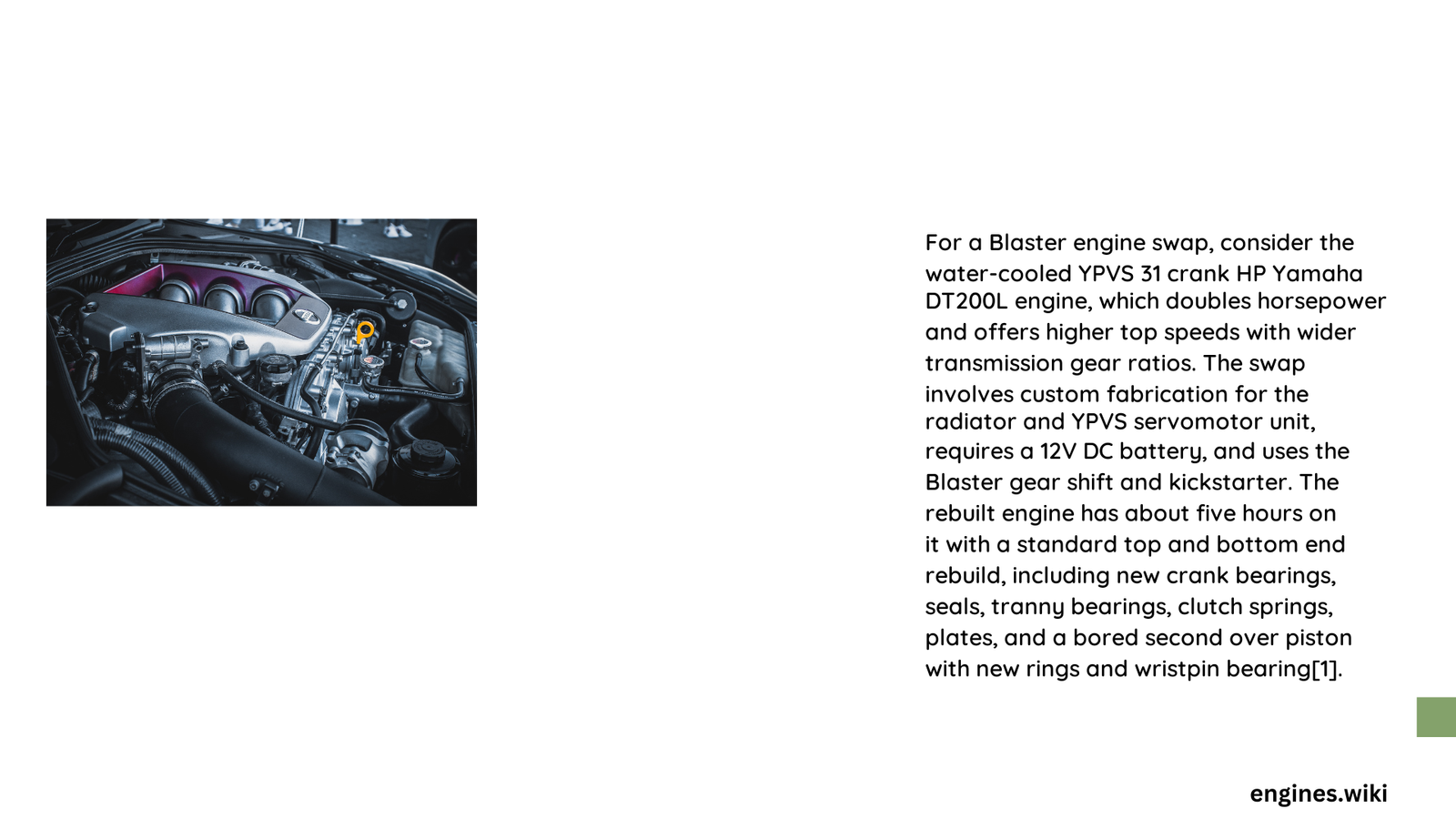Blaster Engine Swap: Comprehensive Performance Guide
Quick Overview of Blaster Engine Swap
A Blaster engine swap represents a critical modification for ATV enthusiasts seeking enhanced performance and reliability. This intricate process involves carefully removing the existing Yamaha Blaster 200 engine and replacing or upgrading it with compatible components, requiring technical expertise, specialized tools, and a deep understanding of two-stroke engine mechanics.
Why Consider a Blaster Engine Swap?
Performance enthusiasts pursue Blaster engine swaps for several compelling reasons:
| Motivation | Performance Impact |
|---|---|
| Increased Horsepower | 10-25 HP Gain |
| Enhanced Reliability | Reduced Mechanical Failures |
| Customization Potential | Tailored Engine Configuration |
What Are the Essential Steps for Blaster Engine Swap?
Preparation and Assessment
Before initiating a Blaster engine swap, consider these critical factors:
- Evaluate current engine condition
- Determine performance goals
- Select appropriate replacement components
- Gather specialized tools and equipment
Disassembly Process
Successful engine removal requires:
- Drain all fluids
- Disconnect electrical connections
- Remove mounting bolts
- Carefully extract existing engine
- Clean mounting surfaces
Component Selection and Compatibility
Key Compatibility Considerations:
– Mounting point alignment
– Electrical system integration
– Transmission compatibility
– Cooling system requirements
What Tools Are Necessary for Blaster Engine Swap?
Recommended Toolkit:
– Socket set
– Torque wrench
– Engine hoist
– Bearing installation tools
– Precision measuring instruments
– Thermal expansion equipment
How Much Does a Blaster Engine Swap Cost?
Estimated Cost Breakdown:
| Category | Price Range |
|---|---|
| Parts | $1,500 – $3,000 |
| Labor | $1,000 – $3,500 |
| Performance Upgrades | $500 – $2,000 |
| Total Potential Investment | $3,000 – $8,500 |
What Performance Gains Can Be Expected?
Performance upgrades during a Blaster engine swap can yield:
– Horsepower increase: 10-25 HP
– Torque improvement: 15-30%
– Enhanced acceleration
– Better overall engine responsiveness
Pro Tips for Successful Blaster Engine Swap
- Work in a clean, well-organized workspace
- Document each disassembly step
- Use high-quality replacement parts
- Consider professional consultation
- Perform thorough testing after swap
Common Challenges During Blaster Engine Swap
Potential Obstacles:
– Wiring harness complexity
– Precise component alignment
– Thermal expansion challenges
– Unexpected parts incompatibility
Maintenance After Engine Swap
Recommended Post-Swap Practices:
1. Break-in period monitoring
2. Regular fluid checks
3. Periodic performance assessments
4. Conservative initial riding
Conclusion
A Blaster engine swap demands technical skill, patience, and investment. By understanding the process, preparing adequately, and executing carefully, enthusiasts can transform their ATV’s performance and reliability.

